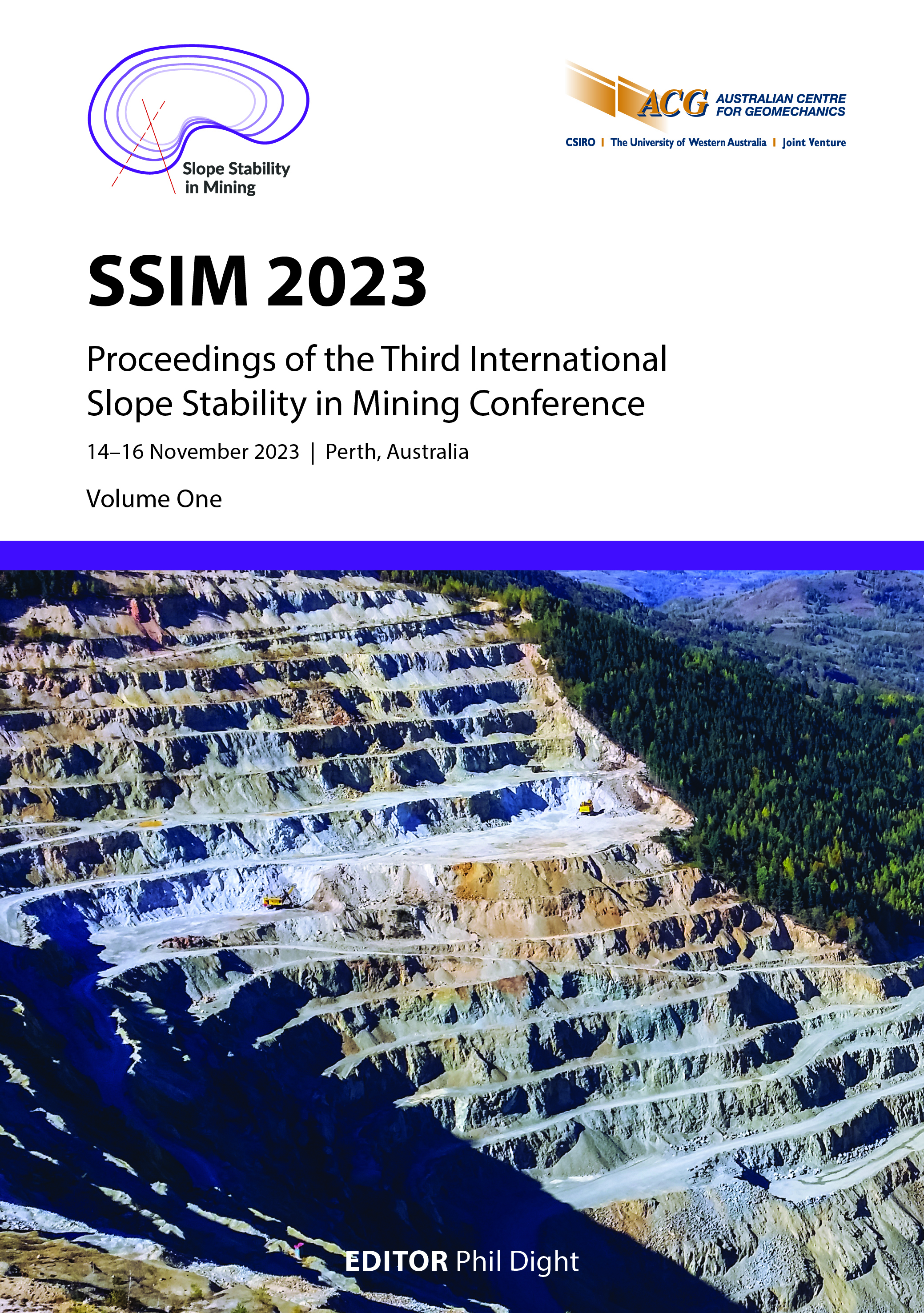A new approach to identify and analyse key blocks in pit slopes

|
Authors: Veltin, KG; Peik, B; Lawrence, K |
DOI https://doi.org/10.36487/ACG_repo/2335_64
Cite As:
Veltin, KG, Peik, B & Lawrence, K 2023, 'A new approach to identify and analyse key blocks in pit slopes', in PM Dight (ed.), SSIM 2023: Third International Slope Stability in Mining Conference, Australian Centre for Geomechanics, Perth, pp. 939-950, https://doi.org/10.36487/ACG_repo/2335_64
Abstract:
The stability analysis of rock wedges in pit walls has primarily focused on assessing blocks that form at the exposed face of the pit. Historically, this has been limited to the analysis of fully daylighting wedges through kinematic analysis. Recent work (Lawrence et al. 2020; Valerio et al. 2020) has extended the assessment to non-daylighting wedges, identified by developing discrete fracture network (DFN) models of structural conditions. However, in existing open pits, sequential failure of blocks has been observed to result in a domino-effect failure that starts with the ‘key block’ – a block whose failure and removal triggers the movement of subsequent blocks. Even though this is a well-known phenomenon, there has been limited investigation into the identification of key blocks in pit slopes, an approach to evaluate key block stability, or the stability of the wedges that develop behind the key block. This is considered a critical component of pit wall optimisation in structurally controlled rock slope designs that has not yet been resolved. In this paper, an algorithm is presented for identifying key blocks within a slope. Collections of blocks are generated using DFN analysis. Once the key blocks are identified, the stability of each block is computed, whether daylighting or not. The stability of remaining blocks is computed using an updated pit design, which includes the scarp of the removed key block. The process is conducted iteratively to assess the impact of sequential failure within a pit slope, yielding a more-robust method for slope optimisation. The key block approach can be applied at a bench, inter-ramp or overall slope scale.
Keywords: discrete fracture network, key blocks, slope stability, pit wall optimisation
References:
Goodman, RE 1995, ‘Block theory and its application’, Géotechnique, vol. 45, no. 3, pp. 383–423.
Goodman, RE & Shi, GH 1985, Block Theory and its Application to Rock Engineering, Prentice-Hall, Englewood Cliffs.
Lawrence, KP, Nelson, MD, Yetisir, M & Matlashewski, P 2020, ‘Kinematic assessment of composite failure mechanisms in pit slopes – a novel slip surface identification algorithm for DFN models’, Paper presented at the 54th US Rock Mechanics/Geomechanics Symposium, June 2020.
Valerio, M, Rogers, S, Lawrence, KP, Moffitt, KM, Rysdahl, B & Gaida, M 2020, ‘Discrete fracture network based approaches to assessing inter-ramp design’, in PM Dight (ed.), Slope Stability 2020: Proceedings of the 2020 International Symposium on Slope Stability in Open Pit Mining and Civil Engineering, Australian Centre for Geomechanics, Perth, pp. 1017–1030,
WSP 2023, FracMan, version 8.10, computer software, WSP, Buckinghamshire.
© Copyright 2025, Australian Centre for Geomechanics (ACG), The University of Western Australia. All rights reserved.
View copyright/legal information
Please direct any queries or error reports to repository-acg@uwa.edu.au
View copyright/legal information
Please direct any queries or error reports to repository-acg@uwa.edu.au

